Aloha and welcome back everyone,
In [Part 1 and Part 2 we explored A-grade Kahelelani shells from Niʻihau and Kauaʻi — how to recognize their color, luster, and shape, and why these details matter when creating or buying real Hawaiian shell jewelry and handmade jewelry from Hawaiʻi.
Now, in Part 3, we’ll continue that journey by focusing on B- and C-grade Kahelelani shells — how to identify them, how they’re used, and what makes them meaningful in both Hawaiian jewelry for beginners and more experienced creations. Not every shell gleams like an A-grade treasure, but every one carries its own beauty, story, and aloha.
These shells often become part of beach vibes jewelry, island life jewelry, or tropical island keepsakes — pieces that capture the spirit of Hawaiʻi itself. Whether you’re learning how to make Hawaiian shell jewelry, exploring Hawaiian shell types, or collecting your first Hawaii-style earrings, this section will help you see their value with new eyes.
By the end of this section, you’ll know how to recognize Kahelelani shell quality across every level — whether you’re collecting loose shells, comparing Hawaiian shell types, or starting your own handmade piece.
So let’s dive in together and explore how every Kahelelani shell — from brilliant A-grade gems to softly colored, natural B-grade tones — carries its own story, artistry, and aloha within the world of Niʻihau shell jewelry and the deeper meaning behind Hawaiian shell jewelry itself.
B & C Grade Shells — Let’s Learn How They Look and What to Watch For
For most people who haven’t collected shells themselves, seeing shells in person — whether from Niʻihau, Kauaʻi, or another Hawaiian beach — can feel a little overwhelming. If sellers don’t clearly explain the quality, it’s easy to assume that what you’re buying must all be good, simply because it’s for sale. But that’s not always true.
I’ve been there myself. When I first started buying shells, I remember looking into a bag and thinking, “Oh wow, these colors are so beautiful.” Everything looked fine at first glance, so I bought them. But later, as I carefully sorted through the shells one by one, my heart sank. Many were cracked, chipped, or too small, and instead of sorting out a few imperfect shells, I ended up pulling out only a handful of good ones. The rest were unusable. That experience taught me how important it is to understand grading before making a purchase — because all those little details can quickly become a big cost if you don’t know what to look for.
✨That’s why learning about shell grades is so important.✨
Kahelelani Shells — B-Grade Quality
With B-grade shells, the surface remains strong and suitable for jewelry, but the shine and color may not reach the brilliance of A-grade shells. These shells are still very good quality — beautiful, dependable, and full of natural character.
➡️ From Niʻihau:
B-grade shells often have a solid outer layer and a soft, natural luster. The shine is gentler, and the colors may look slightly muted or uneven in tone. You might notice small marks, light pits, or subtle shape differences, but overall, they remain strong and ideal for creating durable jewelry.
If you look closely at the shells on the right side of the photo, you’ll see some missing parts or uneven edges — yet they still hold strong structure and natural glow. In my opinion, they are still B-grade shells because they remain beautiful and perfectly usable in jewelry.
➡️ From Kauaʻi:
Kauaʻi shells in B-grade condition often share the same sturdy structure and dependable surface, but they usually have a matte or velvety finish rather than a glossy shine. The difference in luster is what sets them apart from Niʻihau shells, yet both have their own charm and natural beauty shaped by the ocean, sand, and island environment.
Even though B-grade shells aren’t flawless, they still create stunning pieces that balance beauty and value. Many artisans use them for earrings, leis, and bracelets that reflect authentic Hawaiian craftsmanship

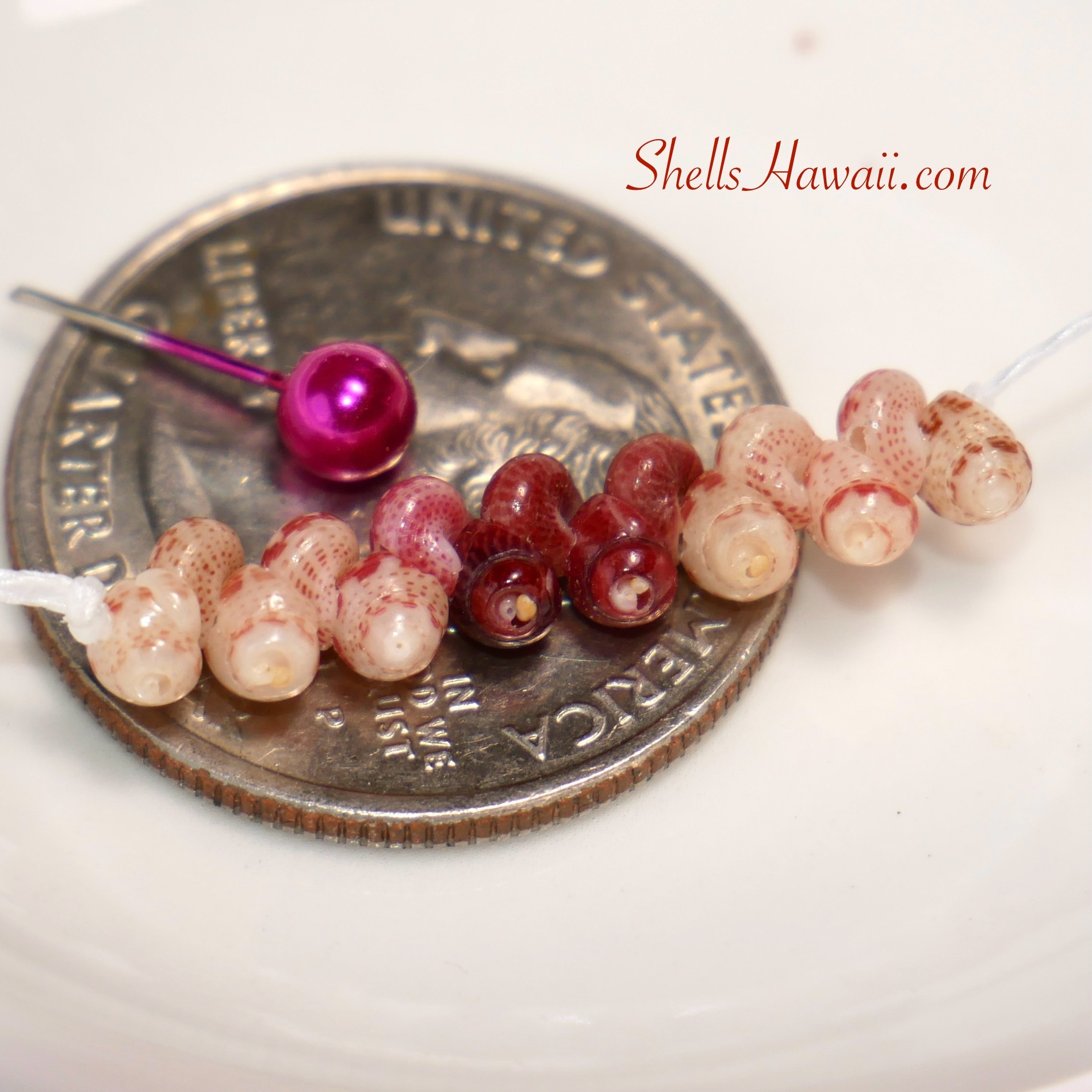
✨ A Note on Grading: The condition of B-grade shells still needs to meet the same expectations of strength and usability that I mentioned earlier for A-grade. Most of the time, you can tell right away if a shell belongs in the A-grade group or not — especially when you place them side by side. If it doesn’t quite measure up, it naturally moves along into the B-grade group. Sometimes, it’s just about using a little common sense and trusting your eye.
Kahelelani Shells — C-Grade Quality
With C-grade shells, the surface should still be strong enough to use — otherwise, they won’t hold up once you begin stringing. But this is the stage where you’ll start to notice more visible flaws and natural wear. These shells may not have the same brilliance as A- or B-grade, yet each one still carries its own beauty and purpose in the creative process.
➡️ From Niʻihau:
C-grade shells usually have a solid outer layer but show more imperfections — duller shine, uneven color, or missing lips. Some may have larger natural holes, open edges, or surface wear formed by the ocean.
Sometimes, Niʻihau shells still hold a very good shine, yet have too many missing parts or open areas to qualify as A- or B-grade. In those cases, they fall into the C-grade category — still beautiful, but not flawless enough for higher grading.
If you look closely at the photo below, you’ll see a mix of pink and deep red shells with chips and missing lips — signs of how nature shaped them. Even so, many still display lovely color patterns and are perfect for practice pieces or rustic-style jewelry that celebrates their natural story.
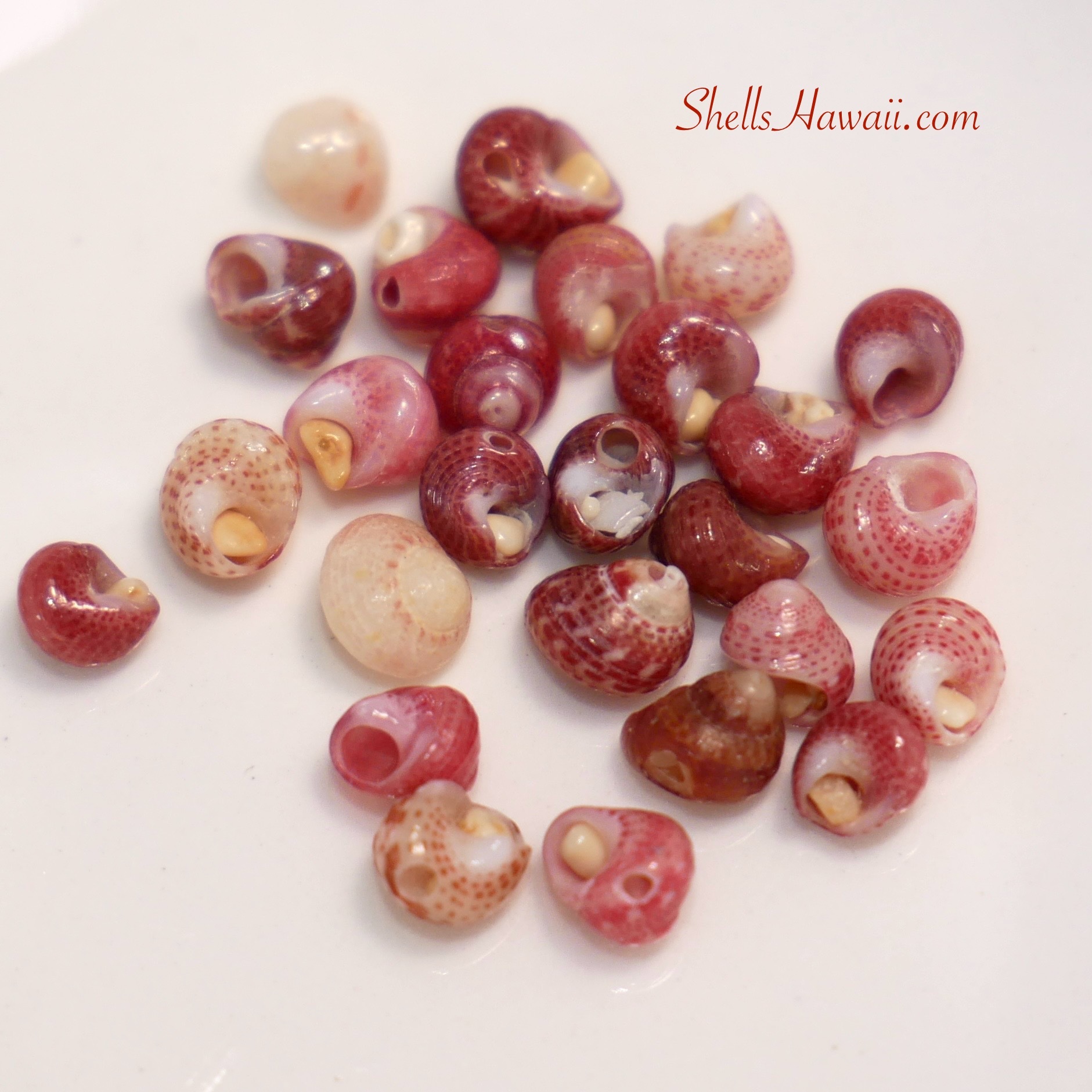

➡️ From Kauaʻi:
Since Kauaʻi shells naturally have a more matte surface, C-grade shells look similar in structure but lack the extra luster that Niʻihau shells may still hold. You’ll often notice small chips, open holes, or uneven edges, yet the outer layer can remain surprisingly strong and usable for casual designs or beginner projects. In the second photo, you can see how these shells vary in shape and color, each holding a soft ocean-worn charm that still reflects the spirit of the islands.
If the surface layer still feels strong, these shells can absolutely be used — especially for practice or casual jewelry. They simply fall outside the A–B grade range because their imperfections are more visible. Sometimes you’ll find these shells in rare colors or sizes that are hard to get in flawless condition, which makes them worth keeping for creative projects. ✨
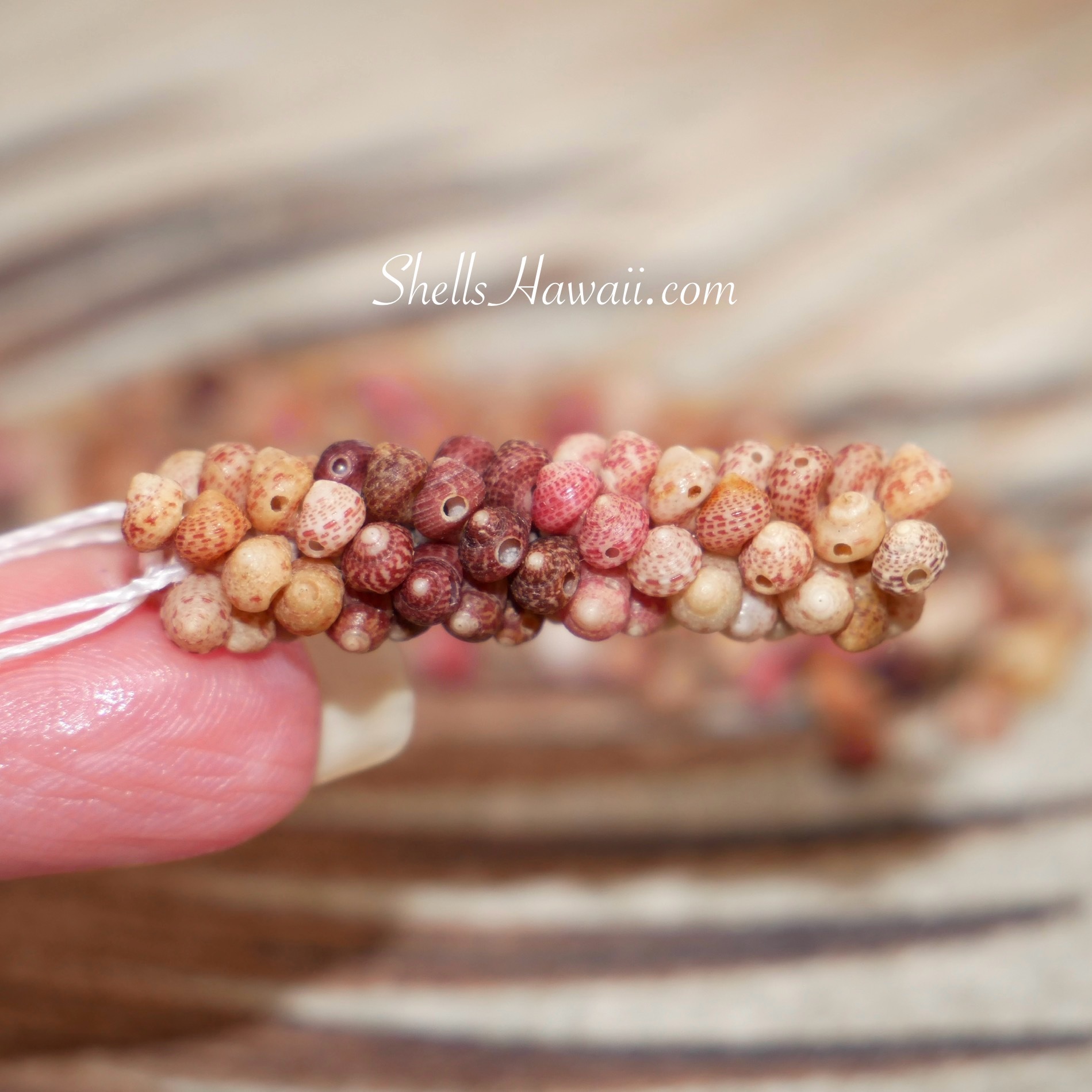
Tip for Beginners:
C-grade shells are perfect for learning. Use them to practice poking, matching, and tying techniques before moving on to higher-grade shells. It’s the best way to build your skill while working with real treasures from Hawaiʻi’s sea — without the pressure of perfection.
What Imperfect Kahelelani Shells Look Like:
Some shells are simply too damaged or fragile to use. You’ll notice things like:
-
Broken tops or missing spirals – The tip is chipped or gone, leaving the shell flat, uneven, or open at the top.
-
Large natural holes created by waves or sea wear – These holes can be big and irregular, often showing the inside layers of the shell.
-
Rough, chalky, or faded surfaces – The shell looks dull or powdery instead of shiny and smooth, sometimes with worn spots or discoloration.
-
Lopsided or incomplete shapes – The shell’s shape is uneven or crooked, so it doesn’t sit straight when strung.
Imperfect shells often appear weak, brittle, or overly worn from the ocean’s movement. While they aren’t strong enough for jewelry, they’re still wonderful for studying color, practicing sorting, or simply admiring how nature leaves its mark on each tiny piece.
These are what we call imperfect shells.
If you ask me, as a creator who has worked with thousands of shells, I do not recommend using imperfect shells in jewelry. Why? Because they’re already weak, and once strung into a piece, worn, or stored, they’re much more likely to break.
These shells are fragile by nature. Imperfections only make them more delicate, so if you wear them, you’d have to be extra careful. The same goes for storing them after use — one wrong bend or bump and they can crack.
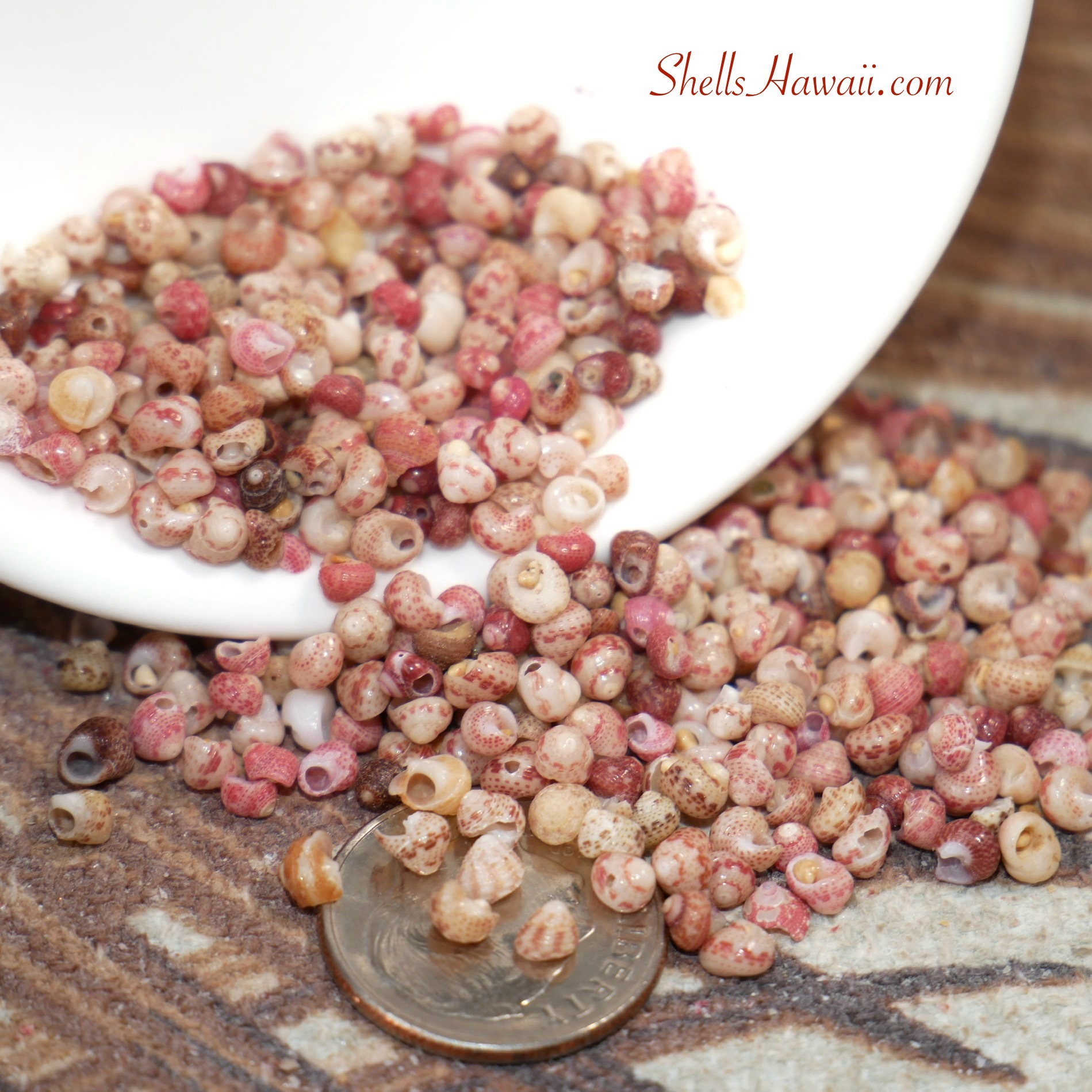
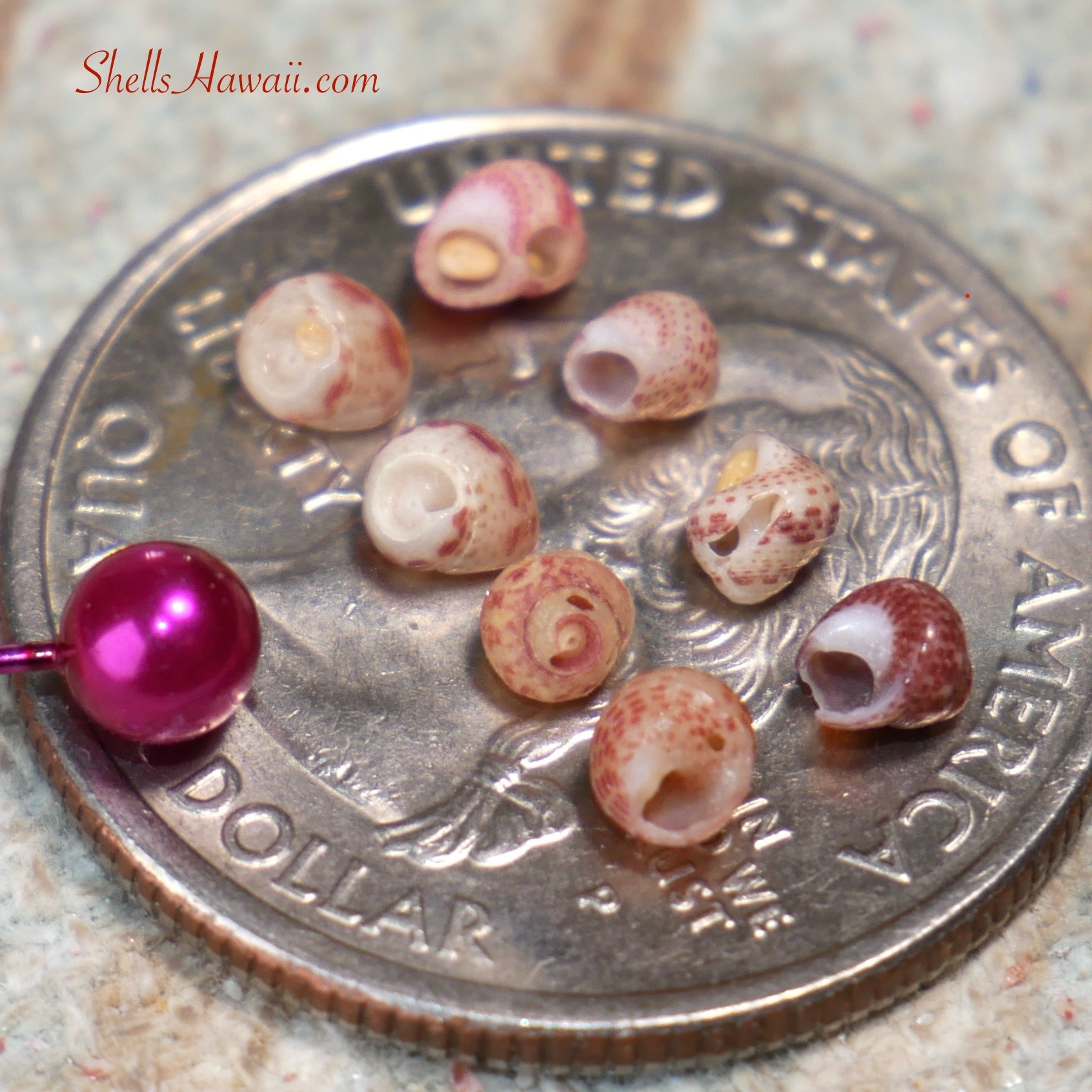
Some people do keep imperfect shells for practice stringing or learning, since they’re less expensive and there’s less worry if they break. But for finished jewelry, I prefer not to use them at all — I’d rather create with strong, A-grade shells that can be cherished and enjoyed for many years.
Quick Tips: What to Look For in Quality Shells
When you’re choosing loose shells for your Niʻihau shell jewelry (ニイハウシェル ジュエリー), here are a few simple things to look for:
- A smooth surface with minimal wear
- Luster & Finish: For Niʻihau shells, look for that glossy shine — the stronger the luster, the higher the grade. But remember, Kauaʻi shells often have a natural matte finish. That doesn’t mean they’re poor quality; as long as the shell surface is strong and clean, they can still be excellent shells for jewelry.
- No cracks, since these can break later
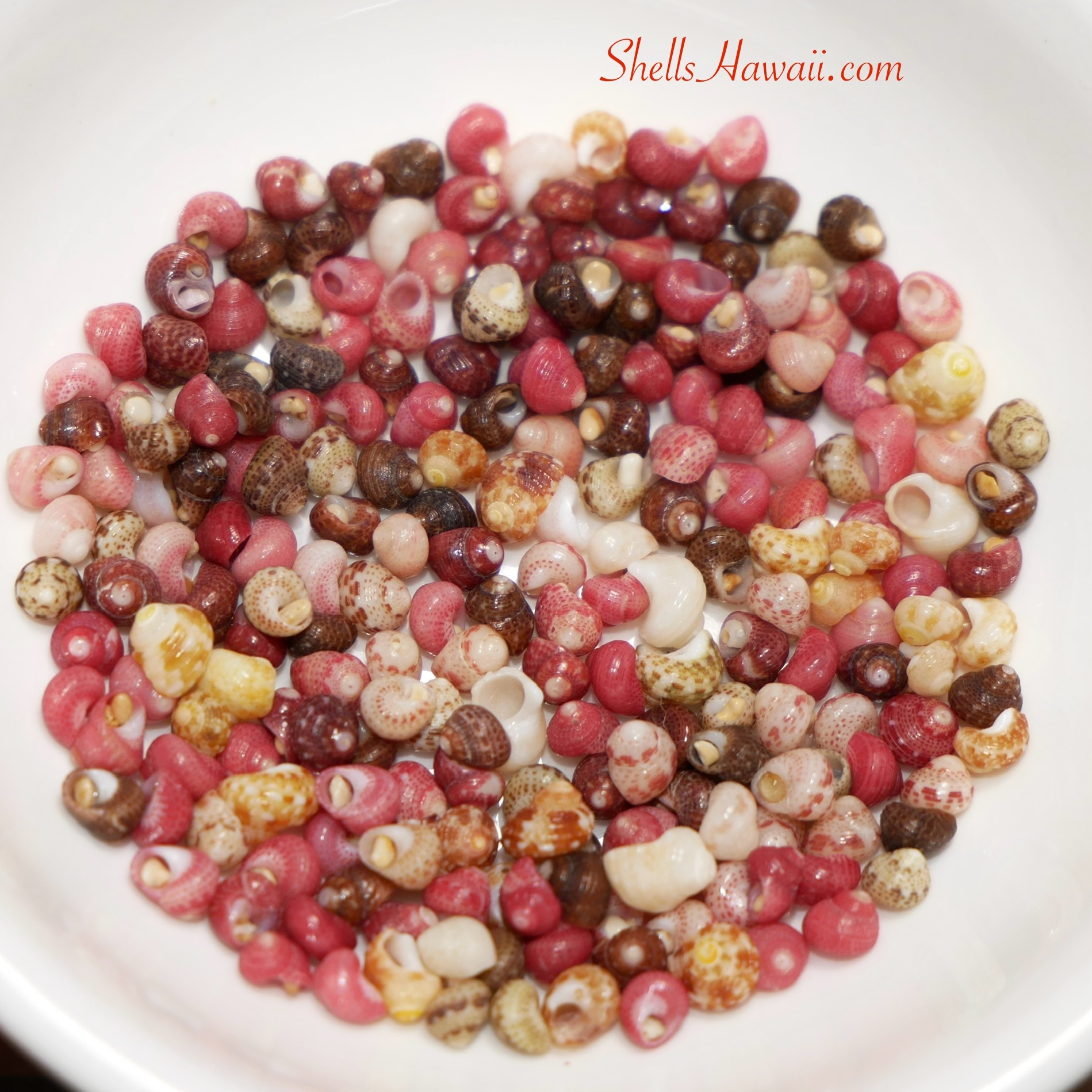
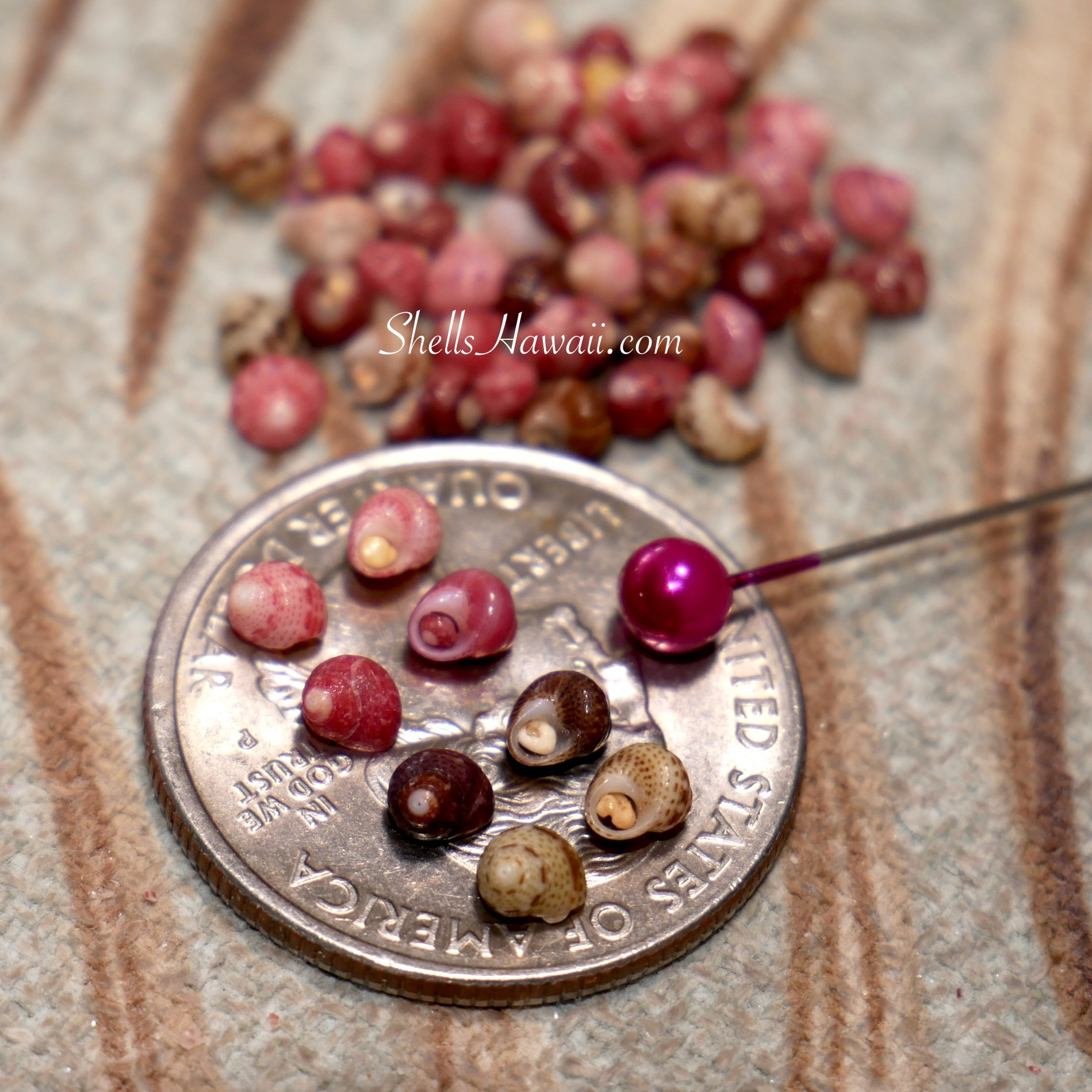
- Strong shell walls that don’t feel too thin or fragile
- Even size and shape, so your jewelry looks balanced
- Natural color depth — whether vibrant (like Niʻihau) or softer/muted (like Kauaʻi), the key is that the color looks healthy and true.
Start with these details, and you’ll already be on the right path to choosing shells that are strong, beautiful, and ready to become something special.
If you’re just starting your journey, practice first with C-grade shells, then move up to B-grade shells, and when you feel confident, you’ll be ready to create with A-grade shells — the finest quality of all.
What I Hope You Take Away
➡️ For Buyers:
When buying loose shells or finished jewelry, you may notice that some creators choose to use a mix of grades within one piece. That’s a personal style choice — and there’s nothing wrong with it. Every artist has their own way of balancing color, texture, and design.
✨ For me, I simply prefer to separate my shell grades when creating, so that each piece reflects exactly what it is. I also list and price them accordingly, so buyers know the quality they’re receiving.
In general, the grade of the shells, along with the workmanship, materials, and findings used, should all play a part in the price. Understanding these details helps you feel more confident and informed — whether you’re purchasing Niʻihau shell jewelry (ニイハウ シェル ジュエリー) or other Hawaiian shell jewelry made with shells from different islands.
❤️ In the end, it’s all about what feels right to you — whether you prefer creating or purchasing pieces made with perfectly matched shells or mixed grades that show nature’s variety. My hope is that this guide simply helps you recognize those differences and appreciate the thought and care that go into every piece.
Now that you’ve learned more about shell quality and what to look for, I hope you feel a little more confident when choosing jewelry or loose shells — whether online or in person. It can feel like a lot to take in at first, but with time, everything starts to make sense.
And I hope my experience helps you learn a little more about shell grading and what makes each shell special✨. If you’d like to see what loose shells or jewelry I have to offer, please take a few minutes to look around my website. If you have any questions or need help before you purchase, please feel free to contact me anytime — I’m always happy to help.
With aloha,
Janjira
Here are a couple of pieces I’ve created using shells from Niʻihau and Kauaʻi, showing their beauty side by side.
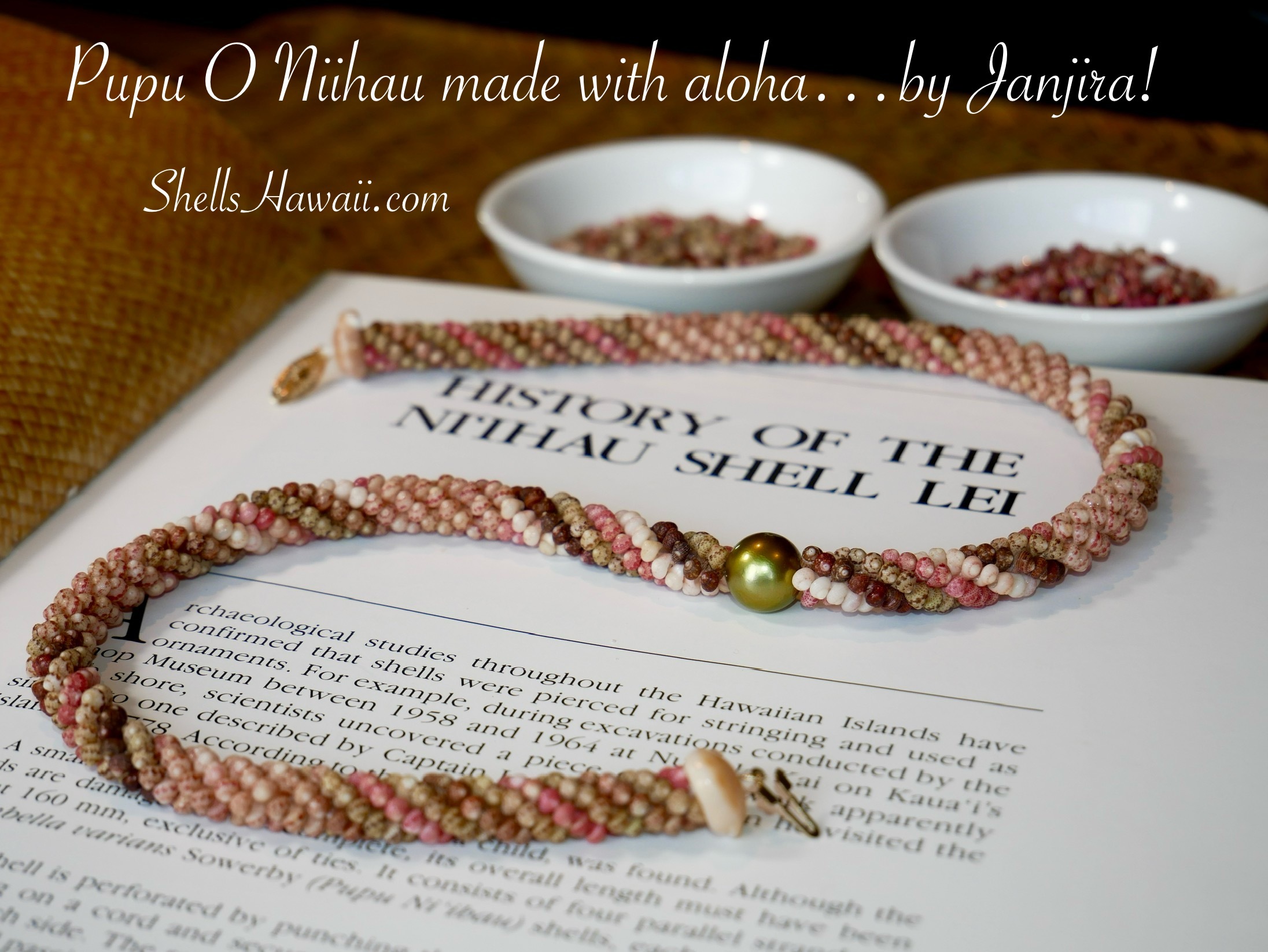
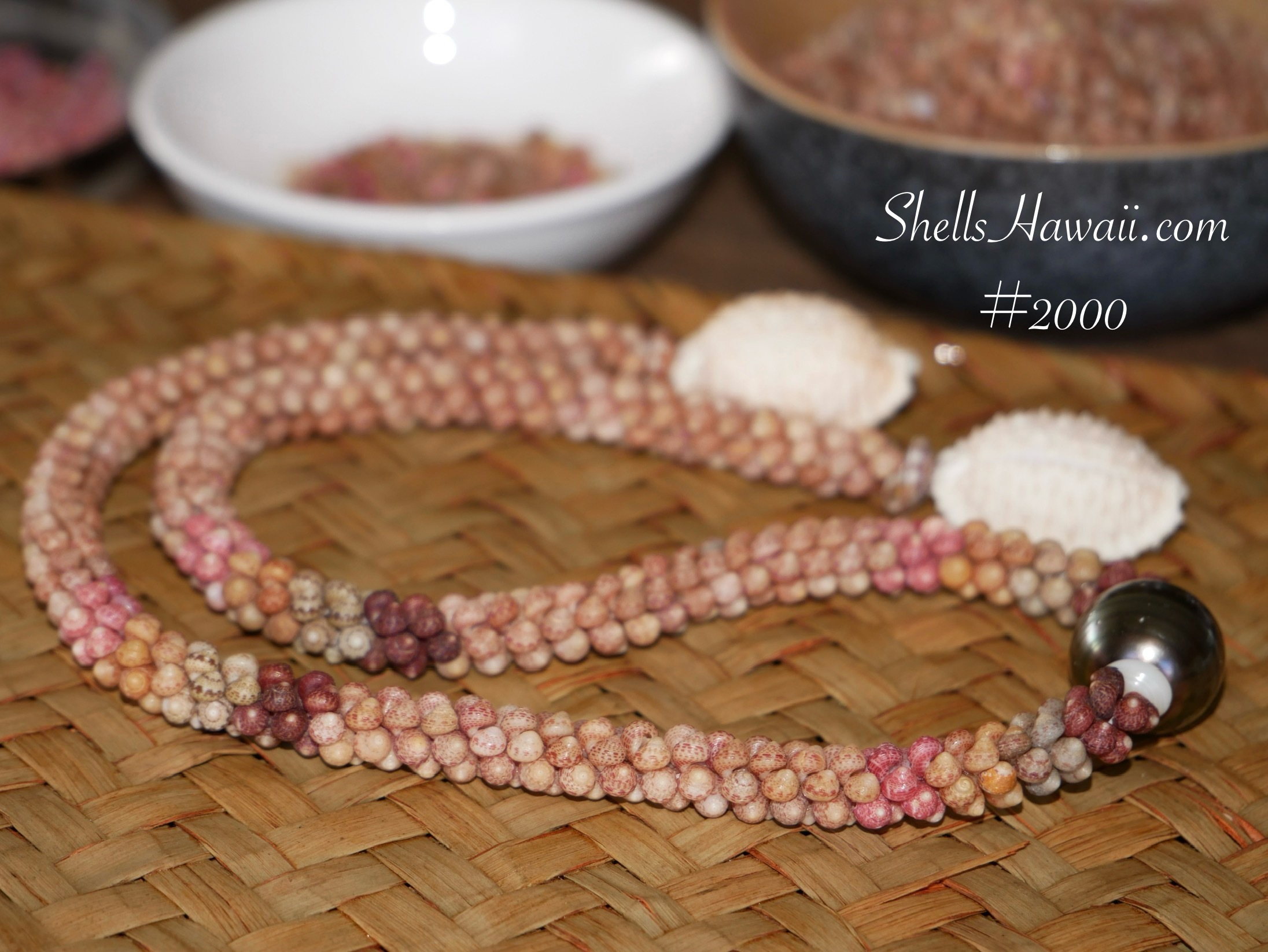
 JPY
JPY

